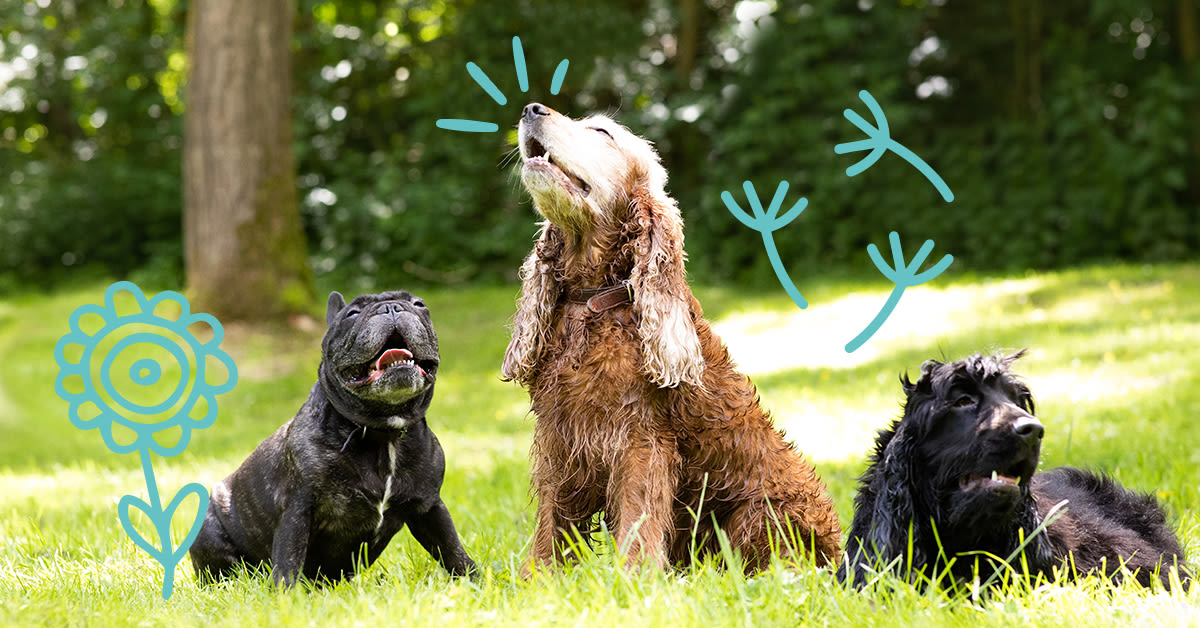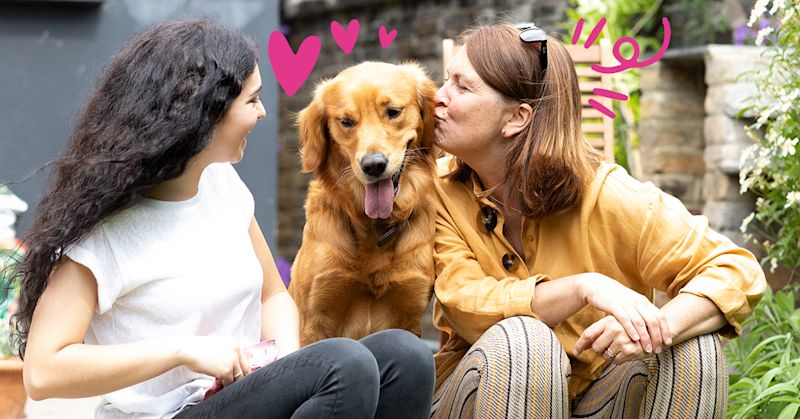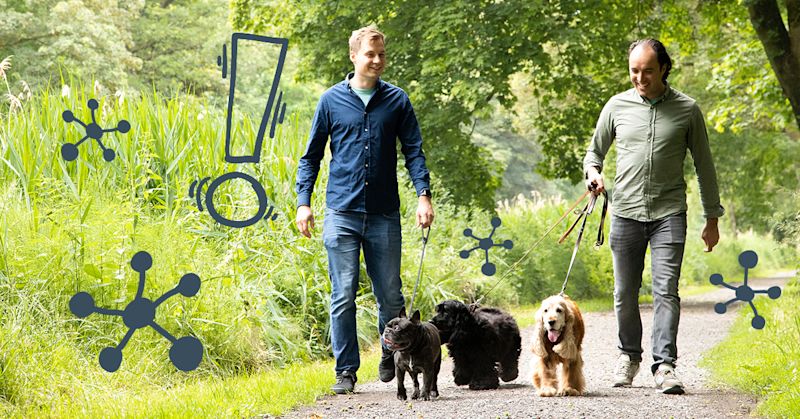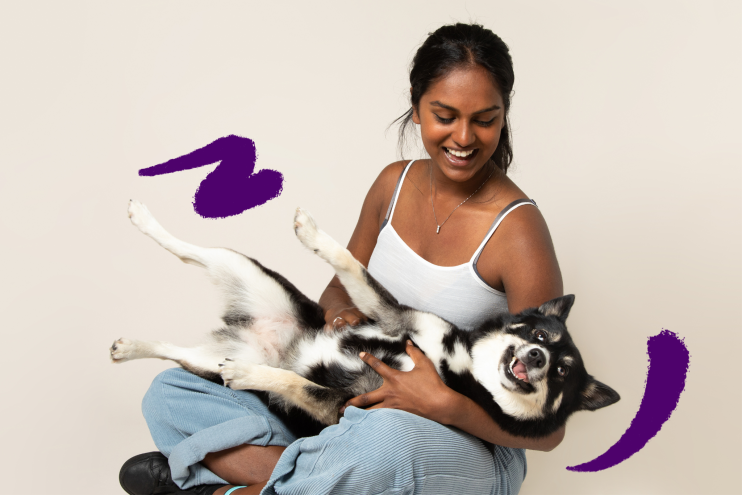Can dogs get hay fever?


There’s nothing better than a sunny walk with your four-legged friend. But unfortunately, the long-awaited warm weather can mean itchy eyes and runny noses for so many of us... These hay fever symptoms are super common in pet parents, but what about our pooches? Do dogs experience hay fever? And if so, how can you ease their discomfort? Let’s dig and sniff a little deeper…
Firstly, what is hay fever?
Hay fever is an allergic reaction to grass, tree, or plant pollen in the air. It’s usually worse between late March and September - and when the weather is warm, humid, and windy. This is when the pollen count is at its highest.
Can your dog get hay fever?
Yes, our canine pals can suffer from hay fever. But the good news is that it’s much rarer in dogs than it is in us. The common symptoms for humans are itchy, irritated eyes, throats, and noses, but it doesn’t always present itself like this in our pooches.

What are the symptoms for dogs?
It isn’t just inhaling pollen that can trigger hay fever in your pup, the histamine response can also be induced by skin contact with pollen. So, the main thing to look for is skin irritation.
If your fur baby is itching, nibbling, or rubbing their paws, eyes, ears, mouth and muzzle, armpits, legs, bottom, groin, or abdomen during spring and summer, they may have hay fever. Their skin may also look flaky, red, and sore in certain areas and feel greasy. And your dog may even lose patches of fur from excessive rubbing or licking.
Although skin irritation is the biggest symptom, here are some other things to look out for:
Watery eyes, which may also be itchy and irritated
A runny nose
Frequent sneezing
An Irritated throat
A rash developing on the face or paws
If your dog is scratching a lot, it’s more likely to be fleas or dust mites than hay fever - but the symptoms are quite similar. So, it’s always best to get your vet to do an allergy test and diagnose what’s up with your pup.
Which dog breeds are more likely to get hay fever?
Symptoms vary from dog to dog, and certain breeds are more susceptible than others. Facial shape, breathing biology, and the type of coat can all affect the likelihood of your dog getting hay fever. It’s more common in these breeds:
Poodle
Dalmatian
Schnauzer
Boston Terrier
Irish Setter
Cairn Terrier
Wire-haired Terrier
West Highland White Terrier
Is hay fever dangerous to your dog?
Although it’s uncomfortable and annoying, hay fever isn’t dangerous to your dog. But keeping the symptoms in check is important for your dog’s comfort and wellbeing. No one likes feeling itchy and irritated!
How do you treat it?
You can’t completely get rid of a pollen allergy in dogs - or humans for that matter - but you can help reduce the annoying symptoms. The first course of action should always be to contact your vet for advice.
Medication such as antihistamines can work, but they aren’t usually as effective in dogs as they are in humans. Don’t forget that certain antihistamines can be poisonous to dogs, so only use what’s been prescribed by your vet!
Here are some other things you can try to soothe your fur baby:
Ear drops
Eye drops
Cleansing wipes
Medicated shampoos, creams, and related products
Prevention is better than cure

The best thing you can do to prevent hay fever symptoms is to limit your dog’s exposure to pollen in the first place. Why not mix up your adventures? For example, take them for a run on the beach, rather than trekking through a field or forest.
When the pollen count is particularly high, a few extra changes to your dog’s routine and environment will help protect them:
Walk them early in the morning or late at night on particularly hot days.
Wipe or wash your dog down after a walk to remove pollen from their coat.
Regularly vacuum and wash their bedding to reduce exposure to pollen. But avoid drying your dog’s bedding outside when the pollen count is high!
Keep windows and doors shut as much as possible.
Vacuum regularly and dust with a damp cloth.
Buy a pollen filter for air vents in your car and a vacuum cleaner with a special HEPA filter.
Don’t keep fresh flowers in the house.
Try a regular foot bath to gently clean their paws.
Make sure your lawn is kept short.
Don’t allow your dog to run through long grass.
Once you’ve got preventions in place and the symptoms in check, you’ll both be able to enjoy the warmer months a little more. But don’t forget, fortunately hay fever really isn’t that common in dogs.
Roll on summer!
About Edgard & Cooper

Joyful pet food
Eating is one of life’s simple joys, so why overcomplicate things? Unlike most other pet foods, we treat nature’s ingredients with respect and make food that’s naturally healthy and full of flavour.

Play nice with nature
We’re on a mission to become the world’s most sustainable pet food. We love nature, so we pledge to make real, lasting change through our targets of zero carbon, fully sustainable packaging and ethically sourced ingredients.

Friends stick together
We donate 1% of our sales to the Edgard & Cooper Foundation, which works with charities that improve the lives of cats and dogs today, while protecting them tomorrow.







